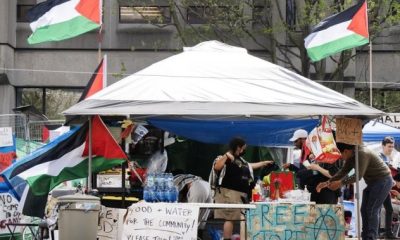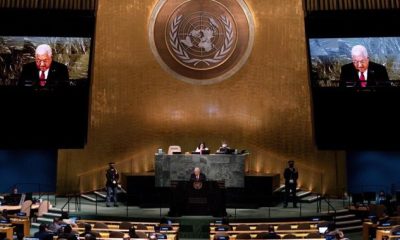General News
Situation in Gaza ‘beyond imaginable’, warns WHO

More than 17,000 people – mostly women and children – have been killed in the besieged Palestinian enclave.
Intense urban fighting raged in and around the Gaza Strip’s largest cities on Friday, as the death toll continues to rise.
After the first phase of its ground offensive in northern Gaza, Israel’s army extended operations southwards this week, where nearly two million civilians are now trapped.
They are cornered in a territory that grows increasingly cramped.
Gaza’s health system is on its knees, the World Health Organization (WHO) warned on Friday, calling for a ceasefire “now”.
“The situation is becoming more and more terrible by the day… literally beyond imaginable,” WHO spokesperson Christian Lindmeier told reporters in Geneva.
“Children and people begging and crying for water, we are at a stage where the most common, most basic supplies are no longer accessible.”
“Civilization is on the verge of collapse,” he warned.
Israeli soldiers, supported by airstrikes, engaged Hamas fighters on Thursday in Khan Younis, the largest city in south Gaza. It has become the epicentre of the war, along with neighbouring Jabaliya.
Gaza’s death toll rose to 17,177 people on Thursday, 70% of whom are women and children, according to Palestinian authorities.
Early on Friday, 40 people were reported dead in strikes near Gaza City in the north, and “dozens” of others in Jabaliya and Khan Younis.
On Thursday evening, Israeli television broadcast videos showing Palestinians in their underwear and blindfolded, under the guard of Israeli soldiers in Gaza. The footage provoked heated controversy on social networks.
Speaking to Israeli Prime Minister Benjamin Netanyahu on the phone, US President Joe Biden “insisted on the absolute need to protect civilians and separate the civilian population from Hamas”, according to the White House.
Washington has firmly supported Israel since Hamas’ bloody 7 October attack, which killed some 1,200 people. However, the US is increasingly concerned about the heavy toll on civilians in Gaza.
Ninety-one Israeli soldiers have been killed in the fighting so far, including on Thursday the son of Gadi Eisenkot, a member of Netanyahu’s War Cabinet.
Thousands of people are trying to flee Khan Younis towards Rafah, on the Egyptian border, the only place where humanitarian aid is still distributed.
“For two months, we have been moving from one place to another… We are very tired, we sleep in the street,” said Abdullah Abu Daqqa, who managed to reach the border town. He called the last two months “the hardest” of his life.
“We have no basic necessities, the situation is getting worse day by day, and there is no political solution on the horizon,” added Ahmad Hajjaj, a displaced Palestinian in Gaza.
The Director-General of the World Health Organization (WHO), Tedros Adhanom Ghebreyesus, said Gaza’s health system was “on its knees”.
Most hospitals in the north no longer function, while those in the south, overwhelmed by the influx of thousands of wounded, are on the verge of collapse.
Since 9 October, Israel has imposed a total siege on the Gaza Strip, causing serious shortages of water, food, medicine and electricity.
Humanitarian aid, which is also strictly limited, only arrives in droplets from Egypt.
Fuel, necessary to operate generators in hospitals and water desalination equipment, is also lacking
Source
Disclaimer: No copyright infringement intended. All rights and credits reserved to respective owner(s).
























